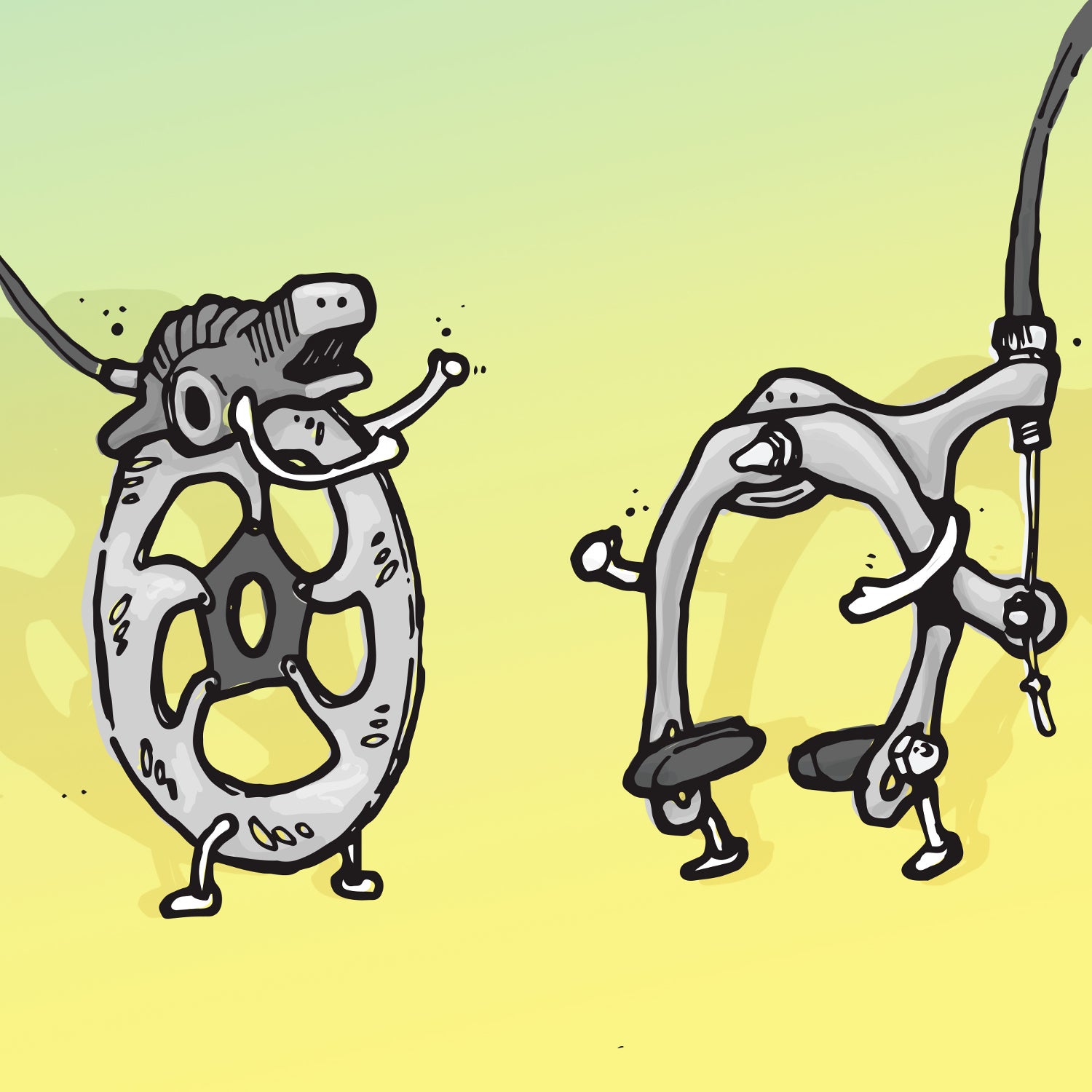Despite having certain retrogrouchical tendencies, I mostly like new bike stuff. Ultimately, I'd say the Cycling Universe tends towards improvement, and that every era is better than the one that proceeded it—technologically speaking, anyway.
Nevertheless, in our eagerness to embrace the new-and-improved we’re often too eager to dismiss the tried-and-true. Sure, some designs should be permanently relegated to the parts bin of history. (There’s not much reason to resurrect the unless you’re looking to upgrade your pennyfarthing.) But plenty of other out-of-fashion parts and setups deserve their eternal place in the cycling canon. Here are a few bits of tech that, while currently unfashionable, we should never relinquish completely.
Skinny Tires
In recent years cycling has gone volume-happy when it comes to rubber. Remember when a 2.1-inch 29er tire could “roll over anything”? Now that size is barely considered gravelworthy. As for your road bike, show up on 23s and people will act like you’re walking around in a pair of ice skates.
Overall, the whole expanding girth thing is the best trend to hit cycling in a long time. Not only does it reflect a more sophisticated understanding of rolling resistance, but it also allows your bike to go more places. And going more places on your bike = fun!
But a funny thing happens when you get back on a bike with skinny tires: it feels really fast. Sure, will show you with charts and graphs why you’re wrong, and you probably are, but it’s OK to go by the seat of your chamois every once in awhile, facts and figures be damned. Yes, wider is usually better, but there’s also visceral pleasure in a tire that doesn’t squirm beneath you when you’re sprinting or muscling your way up a steep climb, and that allows you to feel the road surface thrumming away beneath you.
Basically, riding skinny tires is like wearing a thong: it may not be the “right” choice, but there’s a certain perverse thrill in getting away with it.
Rim Brakes
Rim brakes versus disc brakes? Please. That debate is sooo 2016. Anyway, they’re riding discs in the Tour de France now and as of yet nobody has lost a limb to a hot rotor, so clearly they’re here to stay.
Still, it would be a huge loss for cycling if the disc brake were to take over completely. Instead, we should strive for a state of peaceful coexistence, because the humble rim brake—be it cantilever, linear pull, or caliper—is a sublimely simple yet profoundly effective bit of technology that should always be an option for the rider who puts ease of maintenance first. There are very few situations in which a properly adjusted rim brake won’t provide you with all the stopping power you need and then some. Plus, they make for faster wheel changes, they’re easier to travel with, and you’ve always got an unobstructed view of the current state of your brake pads.
Most importantly, rim brakes don’t always work that great with carbon rims, which discourages you from wasting money on carbon rims.
Inner Tubes
Imagine a simple bladder system small enough to fit in a saddle bag, hydration pack, or jersey pocket that allows you to repair a flat tire on the road or trailside in a matter of minutes. No messy sealants, no seating the bead… just remove the offending pointy thing from the tire, pop in the bladder, pump it up, and ride!
Best of all—and this is nothing short of genius—the bladder itself is repairable, which means that by simply carrying something called a “patch kit” you’re virtually assured to never get stranded by a puncture. (For maximum assurance, skip the single-use CO2 inflator and carry a reusable manual air pressure modulator, also colloquially referred to as a “pump.”)
Rigid Seatposts
The cycling industry has been highly successful in convincing people that every single part of an all-terrain bicycle must move or pivot in order to isolate us from said terrain, and it’s only a matter of time before mountain biking means rolling around inside of a giant knobby amniotic sac filled with breathable liquid like in the movie “The Abyss.”
Pending that, the latest part that simply must move on your mountain bike is the seatpost. Granted, this is not a new idea (see: ), but now that changing your saddle height on the fly involves finicky internals, a remote switch, and a high price tag the dropper post has become absolutely “essential.” This is a tremendous coup for the bicycle industry, because not too long ago a $100 seatpost was considered expensive, whereas now that will hardly even buy you an entry-level model.
None of this is to say dropper posts don’t have their advantages; certainly they wouldn’t have become so popular if they didn’t facilitate the kind of riding people on bouncy bicycles crave. However, it’s also important not to lose sight of the fact that even with a dropper not every component on your bicycle is going to be in exactly the position want it 100 percent of the time, and indeed maintaining control of your bike despite the fixed position of its parts is kind of what cycling’s all about.
In other words, yes, it’s still totally possible to enjoy mountain biking without using a $200 telescoping ass pedestal.
So let’s not lose sight of the simple—and inexpensive—joys of the quaint set-and-forget rigid seatpost. (And if you like different saddle heights for different terrain you can always use one of those equally quaint quick release seat clamps.)
Not Going Bikepacking
OK, fine, this isn’t a component, but the increasing popularity of bikepacking means bicycles have become almost absurdly capable. Of course this is a good thing, and it’s refreshing that the bike industry now wants us to ramble instead of lying prone over a slammed stem. At the same time, for some of us anyway, the idea of escaping for an overnight on the bike remains about as realistic as chasing the maillot jaune. If you’re like me, all of these bosses on your frame only serve to remind you that you’ve got to pick up the kids soon, and that there’s little chance you’ll be bolting anything on there and lighting out for at least the next 20 years.
So as you never lose sight of the beauty of the short ride on a bike that can carry a couple bottles of water and not much else. Your sanity may very well depend on it.


